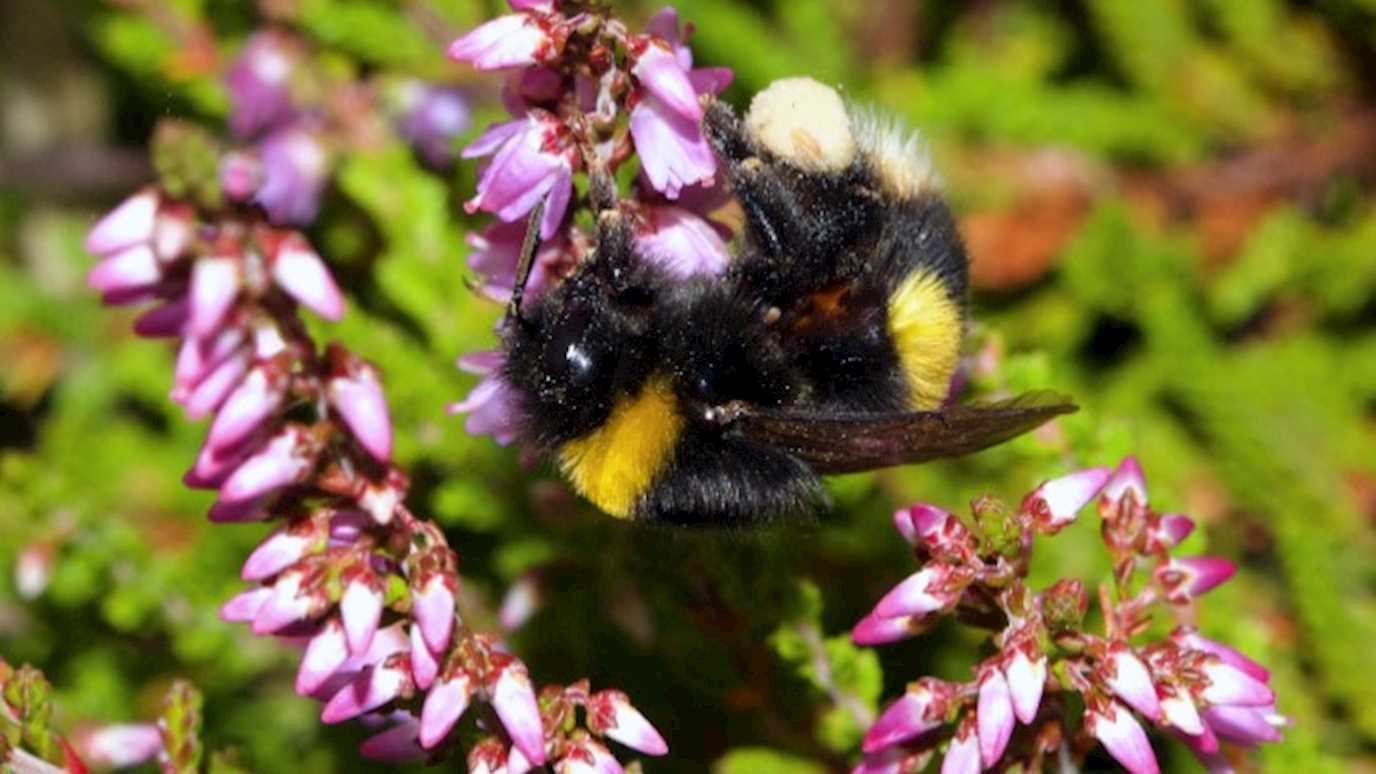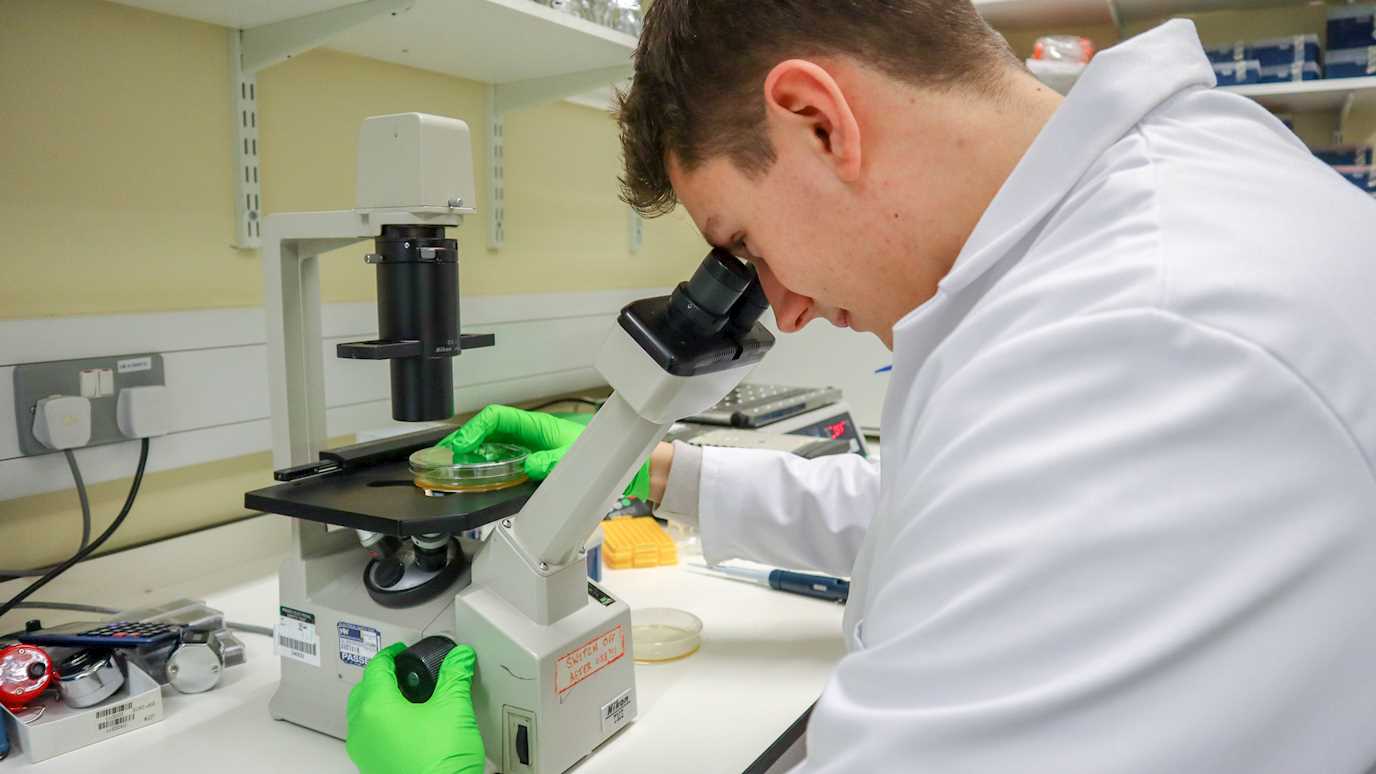A new study published in the journal Current Biology from the Royal Botanic Gardens, Kew and Royal Holloway has discovered that a natural nectar chemical in Calluna heather called callunene can act as a medicine to protect bumblebees from a harmful parasite.

The parasite, Crithidia bombi, is common among wild bumblebees and can be transmitted between bumblebees on flowers or within the nest.
The scientists have been studying several different UK plants for medicinal properties in nectar that might help naturally protect bees against disease, as this is a major contributing factor in bee decline. They found that the species with the highest medicinal value was heather – the UK’s second most productive nectar plant, which is found across Europe.
This discovery is extremely important – around 90% of the world’s plants, including many important food crops, rely on animals for pollination.
Bees’ contribution to these pollination services are by far the most important and are vital, but they are in decline due to interacting effects of diseases, climate change and habitat destruction.
Professor Mark Brown, Conservation Biologist from the Department of Biological Sciences at Royal Holloway said: “Maintaining healthy populations of bees and other pollinators is central to the sustainability of ecosystems and human food production.
“While parasites are a normal part of bee life, the ability to control parasites relies on access to the right kinds of food plants. Understanding which plants are needed to maintain a healthy balance between bees and their parasites can help us restore habitats that maximise bee health.”
The team from Kew and Royal Holloway University tested the medicinal activity against a common gut parasite of bumblebees (Crithidia bombi) of nectar from 17 plants that are important food providers for bees in Europe. In the lab, they grew the parasite in a liquid culture medium, and screened for substances that might inhibit it or kill it.
The nectar with the most potent inhibitory effect was from heather (Calluna vulgaris). By separating the different chemical components of the heather nectar, Dr Koch and team discovered that just a single compound called callunene was responsible for the parasite inhibition which they named after the heather plant Calluna. Further experiments showed that callunene can protect bumblebees from becoming infected with the parasite.
Dr Hauke Koch, Biologist at the Royal Botanic Gardens, Kew added: “Just like us, pollinators can catch diseases that make them sick. Bees also face additional pressures from habitat destruction, pesticides and climate change.
“While beekeepers can often help sick colonies of domesticated honeybees by, for example, directly treating against parasites, we can’t help wild bees against disease threats in the same way. Our discovery shows, however, that a good way to help pollinators in the wild may be protecting key medicinal plants for them.”
Declining heathlands: are bees losing a key medicinal plant?
This protective value of heather nectar could be very important for European bumblebees, especially due to the abundance of heather across the British Isles and Europe. However, whilst this discovery is promising, heathlands are disappearing or becoming fragmented across Europe at a worrying rate, so the benefits to bees could be dwindling. According to The Wildlife Trust, around 85% of lowland heathland in the UK has been lost over the last 150 years due to agricultural development.
Dr Koch said: “Protecting heathlands is very important to conserve the high biodiversity found in this habitat. Our work shows that heathlands may be even more valuable than previously thought by providing wild bumblebees with a natural medicinal nectar as protection against a major parasite.
“The global decline of plant diversity could mean that pollinators are losing many other health promoting plants without us realising it. We need to further study the importance of plant diversity for pollinator health and ensure that key beneficial plants like heather are protected in their natural environment.”
This important research done at Kew in collaboration with Royal Holloway, and funded by the Peter Sowerby Foundation, is part of a wider project investigating the nectar and pollen chemistry of a wide variety of plants in natural and agricultural environments for their nutritional and medicinal value to pollinators.
Identifying and conserving key beneficial plants is essential to safeguard pollinators against the threats of a changing environment.
Professor Phil Stevenson, Plant Chemist at the Royal Botanic Gardens, Kew said: “We often assume that flower abundance is the single important factor in renovating our natural landscapes, but our work shows we need to know more about the specific benefits that pollinators acquire from different plant species so that we can manage existing habitats and improve others more effectively.
“Conserving heathlands may be of greater value to pollinators than previously thought owing to this medicinal quality. Our work on pollinators at Kew highlights the importance of research to fully understand how landscapes can be improved with plants that have known specific benefit to bees.”

























